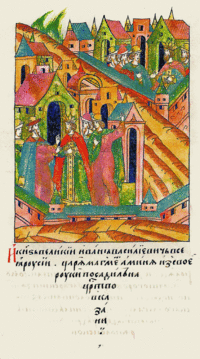
Isolation and characterization of new Puumala orthohantavirus strains from Germany
Sign Up to like & getrecommendations! Published in 2020 at "Virus Genes"
DOI: 10.1007/s11262-020-01755-3
Abstract: Orthohantaviruses are re-emerging rodent-borne pathogens distributed all over the world. Here, we report the isolation of a Puumala orthohantavirus (PUUV) strain from bank voles caught in a highly endemic region around the city Osnabrück, north-west… read more here.
Keywords: puumala orthohantavirus; isolation characterization; puuv strain; veroe6 cells ... See more keywords

First insights into Puumala orthohantavirus circulation in a rodent population in Alsace, France
Sign Up to like & getrecommendations! Published in 2018 at "Zoonoses and Public Health"
DOI: 10.1111/zph.12464
Abstract: In‐depth knowledge on the mechanisms that maintain infection by a zoonotic pathogen in an animal reservoir is the key to predicting and preventing transmission to humans. The Puumala orthohantavirus (PUUV), the most prevalent orthohantavirus in… read more here.
Keywords: puumala orthohantavirus; puuv; year; alsace ... See more keywords

Cluster of human Puumala orthohantavirus infections due to indoor exposure?—An interdisciplinary outbreak investigation
Sign Up to like & getrecommendations! Published in 2022 at "Zoonoses and Public Health"
DOI: 10.1111/zph.12940
Abstract: Puumala orthohantavirus (PUUV) is the most important hantavirus species in Europe, causing the majority of human hantavirus disease cases. In central and western Europe, the occurrence of human infections is mainly driven by bank vole… read more here.
Keywords: cluster; hantavirus; investigation; puumala orthohantavirus ... See more keywords

Analysis of Puumala orthohantavirus Genome Variants Identified in the Territories of Volga Federal District
Sign Up to like & getrecommendations! Published in 2022 at "Tropical Medicine and Infectious Disease"
DOI: 10.3390/tropicalmed7030046
Abstract: Hemorrhagic fever with renal syndrome (HFRS) is a zoonotic disease commonly diagnosed in the Volga Federal District (VFD). HFRS is caused by Puumala orthohantavirus (PUUV), and this virus is usually detected in bank voles as… read more here.
Keywords: volga federal; genome variants; analysis; federal district ... See more keywords

Increased Heparanase Levels in Urine during Acute Puumala Orthohantavirus Infection Are Associated with Disease Severity
Sign Up to like & getrecommendations! Published in 2022 at "Viruses"
DOI: 10.3390/v14030450
Abstract: Old–world orthohantaviruses cause hemorrhagic fever with renal syndrome (HFRS), characterized by acute kidney injury (AKI) with transient proteinuria. It seems plausible that proteinuria during acute HFRS is mediated by the disruption of the glomerular filtration… read more here.
Keywords: levels urine; orthohantavirus; urine acute; severity ... See more keywords

Tropism of Puumala orthohantavirus and Endoparasite Coinfection in the Bank Vole Reservoir
Sign Up to like & getrecommendations! Published in 2023 at "Viruses"
DOI: 10.3390/v15030612
Abstract: In Europe, most cases of human hantavirus disease are caused by Puumala orthohantavirus (PUUV) transmitted by bank voles (Clethrionomys glareolus, syn. Myodes glareolus), in which PUUV causes inconspicuous infection. Little is known about tropism and… read more here.
Keywords: tropism puumala; bank; puumala orthohantavirus; bank voles ... See more keywords